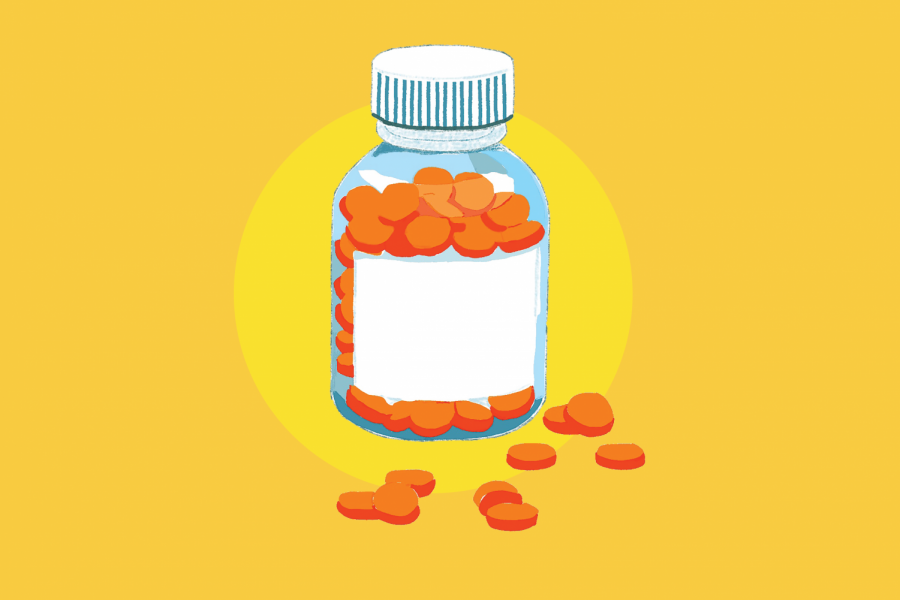Why I’m worth more than everyone I know
Apr 14, 2020
Three weeks into January this year I slept from like 8 in the morning until 5 in the evening. The doctors had me loaded up with “feel-good juice” (their words) and anesthesia and strapped me to the operating table for a grueling nine-hour operation to straighten my spine. I was out cold and out of my mind. Waking up in the recovery room, with full function in my limbs and $30,000 worth of titanium hardware secured to my vertebrae, was the end of an arduous two years of back-bracing and scoliosis exercises. Now, at least, I’m taller than my friends.
The doctors found my scoliosis in the spring of ninth grade during a checkup. It was surprising, to say the least, though at the time I didn’t anticipate what that would entail. The specialists prescribed a hard-plastic, full-torso brace to be worn 23 hours daily, meant to ease the progression of my spine’s curve. I begrudgingly wore it every day, all day, for two full years, but I’d be lying if I said I wasn’t pissed. Try high school in a brace.
People couldn’t tell, I don’t think, but I like to think it had a big impact on my experience. My confidence plummeted, my wardrobe dwindled, and my eagerness to interact with anyone other than my parents was at a minimum. It was tough, definitely, to hear after two years of vigilance that the brace had failed its purpose, and my spine was approaching a life-threatening degree. It was truly a bummer in the summer.
The operation — deemed “spinal fusion” — sounded simple enough. They’d slice me open, fasten two aluminum rods on either side of my spine, and pull it straight. A bone donor’s generous contribution would be incrementally arranged between each pair of vertebrae so that my bone would “fuse” together, and after a year of restricted activity, finally, I’d be fixed.
The surgery itself I obviously don’t remember, but the pain afterwards definitely wasn’t a stroll. I lost weight, too, which I couldn’t afford. I won’t mention all of the side effects of anesthesia, but know that it’s extremely unpleasant. The first night, I was so drugged up, every time I moved I’d vomit out my brains and bile. I also wasn’t allowed to lie in one position for more than an hour, so the nurses would come turn me, I’d puke, rinse, wash, and repeat.
I’d decided before surgery that I’d do my best to refrain from using too much medicine, but I didn’t anticipate the levels of discomfort I’d experience. Not for a second, though, did I hesitate to mash the hydromorphone button. Who knows, maybe it helped, but I was so comatose I didn’t even register. The doctors and nurses kept encouraging me to use the painkillers, they’re so helpful, but I didn’t want to. Even when I was discharged a mere four days later, they sent me home with a big container of oxycontin. I took exactly one, and it messed me up so badly I couldn’t do anything but lie still for the day. That’s a no from me.
Recovery was quite literally painfully slow. Again, I’ll spare the details, but after three weeks of oatmeal and prune juice I was finally able to use the restroom again. Oh, and get this: The doctors gave me a new brace to wear for three months so that I won’t bend my back. Joke’s on me.
Finally, though, most things considered, I’m doing well. As you read this I’ll be doing better. I’m able to attend school again (I was back for four days before it closed) and I can move and yell at people and eat balanced meals. In July I’ll be able to start lifting things and probably swim or do something mildly physical. I’m immensely grateful everything went well. Life is slowly getting back to normal, amongst the covidiocracy, and my parents are finally lucid again. Best of all, though, is that with a new car’s worth of hardware in my back, I’m objectively more valuable than you. Funny how that works.




